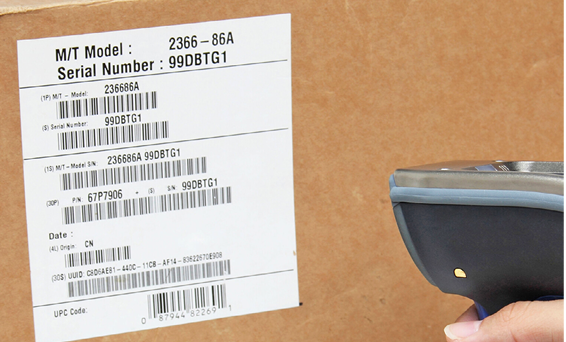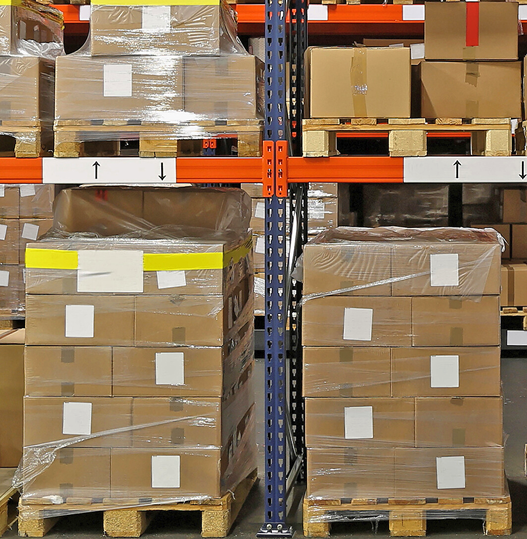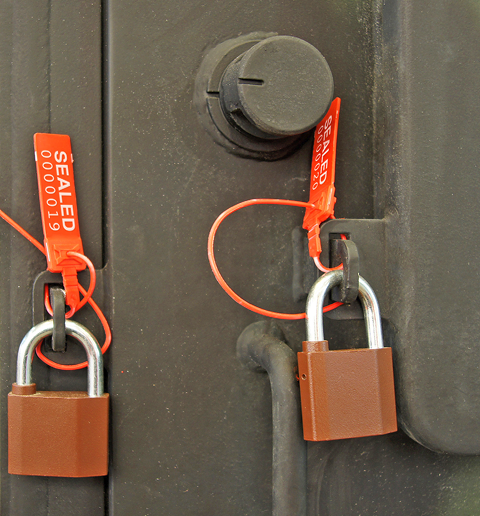Traceability Plans for Food Products
Traceability is the ability to efficiently trace the pathways of food products throughout the supply chain, including the history, applications, or locations of food products. The goal is to have records that follow a product through each point in the supply chain. Traceability measures for food products can include the origin of supplies, materials, and ingredients, as well as processing history, shipping/distribution chains, and sale location.
Effective traceability can help to quickly remove contaminated/adulterated food products from distribution, prevent and/or reduce illness, improve food safety and quality, and reduce economic losses to producers and processors. Other results of effective traceability can include protecting your company and brand, avoiding devastating economic shocks to the food system, and boosting consumer confidence.
Detailed and accurate records throughout all phases of the distribution channel allow quick action at all levels to locate and gain control of the product in question. Food supply distribution channels are complex, so detailed and accurate records are necessary to ensure efficient and effective traceability and recall. To reduce risk for agricultural operations and maintain good economic sustainability, it is imperative to keep good records throughout all phases of operations.
Several legislative actions have enhanced recall and traceability of food products, including these:
- Food Safety Modernization Act (FSMA; January 2011)
- USDA Food Safety and Inspection Service amendment to 9 CFR (2012)
- Bioterrorism Act (2002)
- Country of Origin Labeling (COOL)
- Produce Safety Rule (part of FSMA; 2015)
These rules require that a product be traceable at least one step forward and one step backward from any point in the distribution or manufacturing process. However, there is increased interest from industry leaders and regulatory agencies (e.g., FDA) to improve the capacity of the food industry to trace foods “from farm to fork” (also called end-to-end traceability).
Traceback and Traceforward
Quickly identifying sources of contamination requires rapid traceback, and identifying where the product has gone requires rapid traceforward.
Traceback can have some associated problems related to the supply chain and recordkeeping, including recordkeeping accuracy, paperwork/technology challenges, readability/clarity, response time (hours versus days), lack of a standard universal recordkeeping system, and personnel changes. For example, electronic records tend to be more efficient for traceability purposes than paper-based records because it takes less time to find the needed information.
Traceback information sources include
- lot numbers.
- farms, fields, pastures, barns.
- invoices.
- transport trucks used.
- drivers.
- potential contamination sites (production/processing location or during transportation).
- dates of receipt.
- processing time.
- shipping time.
- number of lots in house.
- list of producers and suppliers.
- lot and batch numbers of ingredients used.
- production records.
Traceforward identifies everywhere the product was distributed and allows potentially contaminated products to be removed from distribution. It may also identify other outbreaks and cases not reported. Traceforward comes with responsibilities for each entity involved throughout the supply chain to ensure accuracy and product safety. For example:
- Once the product is sold and received by the distributor/customer, who is responsible for tracing it?
- Do distributors/customers have adequate recall and traceability procedures?
Effective Recordkeeping
- Allows quick identification of the product.
- Identifies where the product was produced, manufactured, and distributed.
- Provides all information with a legible code and/or legend on the product label or container.
Effective Product Coding
- Allows for identification of plant/facility/farm, etc.
- Includes information such as production line, farm, field, and other identifying information.
- Includes a date code that may include hour, minute, and second when the product was packaged.
- Relates back to other records to identify ingredients and packaging used to prepare the finished product.
Producing Good Traceability Records
- Keep all records organized for quick reference to all information related to a specific product (shortens response time in critical situations).
- Create the records at the site and time of action (formulation, packaging, shipping, distribution).
- Record information at the point of activity.
- Have records initialed and dated by the person recording the information at the time of observation.
- Make sure all pertinent information is captured at the time. (For example, record the lot codes and other appropriate manufacturing/formulating data from each ingredient used in the product; the more detail, the better.)
- Keep receipts, invoices, delivery tickets, and other shipping/receiving records.
Internal Records
- Quality control records (e.g., incoming inspection logs, production quality audit log sheets)
- Production documents and records (e.g., fertilizer used and when applied, chemical applications, feed, vaccinations, ingredient logs and usage logs, anything used in the production of human or animal food)
- Inventory control records (e.g., ingredients, packing, labeling)
Outgoing Records
- All lot numbers involved in finished product
- Date of shipment
- Date of manufacture
- Customer ID
- Lot numbers of product for each customer
- Driver and truck information
- Seal number used on door of truck
Example Lot and Product Recording Sheet

Business Reflections
Consumers react positively to manufacturers who take proactive actions in food recall situations.
- Would you know what to do in these situations?
- A pesticide or fertilizer you have in inventory or have used was recalled
- An ingredient you used was recalled (e.g., spices, breading)
- Packaging materials were contaminated
- A shipped product did not arrive at its destination
- Would you be able to determine which product lots were involved?
- Would you know how much product was produced or in contact with those materials or ingredients of concern?
- Would you know where your product was distributed and to which customers?
Outbreak (Foodborne Illness)
- Monitor and report any illnesses to authorities immediately.
- Immediately hold any suspect products to prevent further
illness or injury. - Make sure certain controls are in place.
- Pull source and distribution information.
- Begin recall preparation steps:
- Determine lot numbers.
- Assess likeliness of occurrence.
- Check all personnel for illness or absence.
- Review complaint and processing records.
- Review sample test results if applicable.
- Test ingredients and product samples.
- If source is found, begin recall procedures immediately (notify
authorities, suppliers, distributors, consumers if necessary).
The Future of Traceability
Various regulatory and trade organizations are working on improvements to product traceability. The ability to record and track key data elements of a product or ingredient through all relevant supply chains is of utmost importance. Having a unique product identifier, event location information, and time and date stamp are critical. Being able to share this data quickly and efficiently is key to mitigating risks to consumers.
One new system, blockchain data sharing, is being pilot-tested by several major food companies. The blockchain system shares data about a product from one destination point to the next in real time. While other tools and methods (e.g., bar coding and DNA sampling) have been used, they have proven to be inefficient and/or too costly for complete incorporation into the supply chain for all products.
Summary
Our ability to better trace the paths of products through the supply chain will help to improve food safety and minimize devastating economic shocks to the food system. Traceability is of utmost importance to the entire food chain. Successful traceability adds value for all stakeholders while ensuring effective product removal from the marketplace if necessary. Following a comprehensive and effective tracing system will enhance consumer confidence, minimize productivity losses, and mitigate potential risks to an operation.
References and Additional Resources
Conference for Food Protection. Emergency Action Plan for Retail Food Establishments, Second Edition.
Food and Drug Administration (FDA). Food Defense and Emergency Response for Retail Food.
Food and Drug Administration (FDA). Footprint for New Era of Smart Food Safety and New Proposed Traceability Rule.
Food and Drug Administration (FDA). Guidance for Industry: Food Security Preventive Measures Guidance for Food Producers, Processors, and Transporters.
Food and Drug Administration (FDA). Guidance for Industry: Questions and Answers Regarding Mandatory Food Recalls (21 CFR 423 of FD & C as added by section 206 of FSMA).
Food and Drug Administration (FDA). Protect Food and Water During Hurricanes and Other Storms.
Food and Drug Administration (FDA). 21 CFR 7, Subpart C (Voluntary Recall Guidelines). April 2019.
Institute of Food Technologists (IFT). Global Food Traceability Center.
United States Department of Agriculture – Food Safety and Inspection Service (USDA FSIS). A Consumer’s Guide to Food Safety: Severe Storms and Hurricanes.
United States Department of Agriculture – Food Safety and Inspection Service (USDA FSIS). Emergency Preparedness.
United States Department of Agriculture – Food Safety and Inspection Service (USDA FSIS). Emergency Response.
United States Department of Agriculture – Food Safety and Inspection Service (USDA FSIS). Food Defense Plan: Security Measures for Food Defense.
United States Department of Agriculture – Food Safety and Inspection Service (USDA FSIS). How to Develop a Meat and Poultry Product Recall Plan.
United States Department of Agriculture – Food Safety and Inspection Service (USDA FSIS). Recalls (9 CFR 418).
MSU Extension Publications
P3497 Disaster Preparedness for Food Businesses: An Overview
P3498 Preparing to Respond: Four Steps to Developing a Crisis Communication Plan
P3542 Developing a Food Recall Plan
P3544 Emergency Action Plans for Food Businesses
P3545 Labeling Mississippi Cottage Food Products
P3546 Financial and Risk Management Considerations for Food Businesses
P3551 Labeling Food Allergens on Food Products
This material is based upon work supported by USDA/NIFA under Award Number 2018-70027-28585.
Publication 3552 (12-23)
By J. Byron Williams, PhD, PAS, Associate Extension Professor, Food Science, Nutrition, and Health Promotion; Courtney A. Crist, PhD, Assistant Extension Professor, Food Science, Nutrition, and Health Promotion; Elizabeth Canales, PhD, Assistant Professor, Agricultural Economics; and Carley C. Morrison, PhD, Assistant Professor, Human Sciences.
The Mississippi State University Extension Service is working to ensure all web content is accessible to all users. If you need assistance accessing any of our content, please email the webteam or call 662-325-2262.








